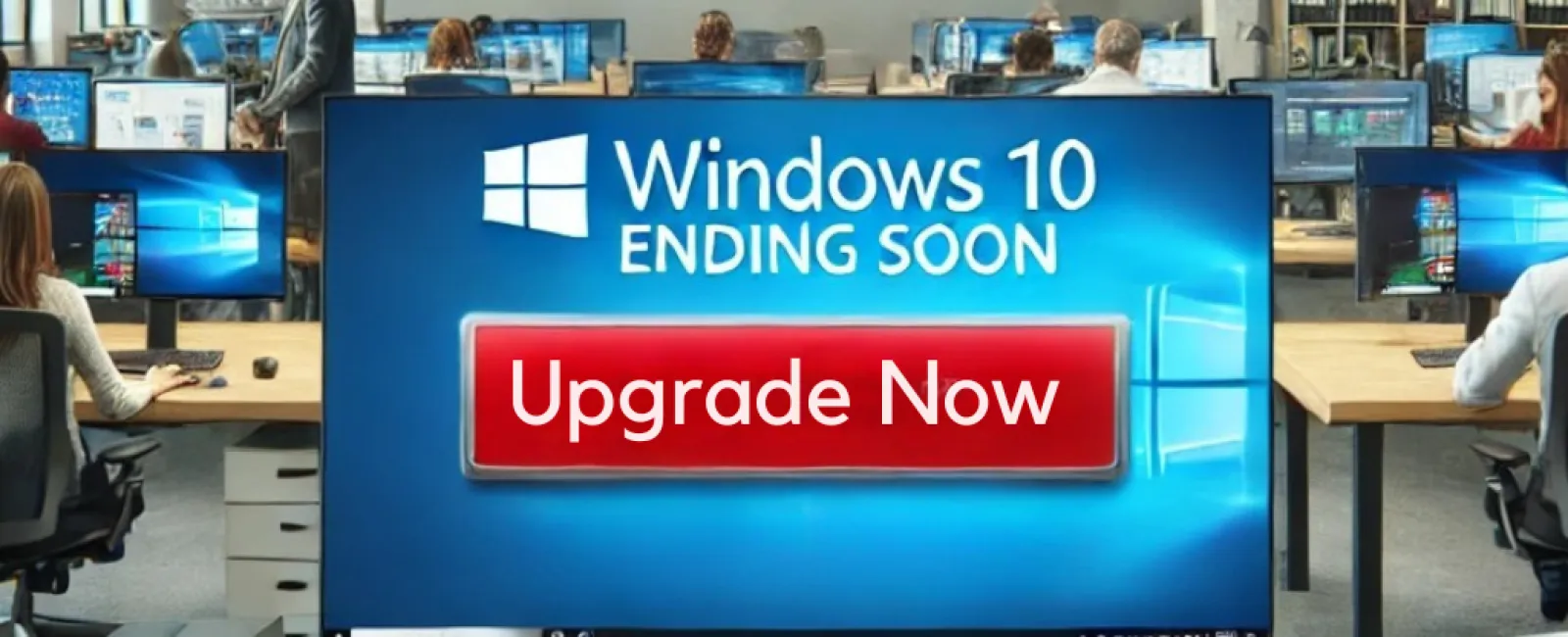April 14, 2025
Save the date: October 14, 2025 marks the official end of Windows 10 support. After this cutoff, Microsoft will cease all security updates, bug fixes, and technical assistance for Windows 10. What implications does this have for your business's software and productivity tools?
Continuing to use Windows 10 beyond this date places not only your operating system at risk but may also jeopardize your essential business applications. Here's what every business owner needs to know.
Ending Security Updates = Elevated Vulnerabilities
When Windows 10 support terminates, security patches stop too. Any new vulnerabilities discovered after October 14, 2025, will remain unaddressed, increasing your exposure to cyber threats.
Consequences For Your Applications:
● Increased Risk of Data Breaches: Without ongoing patches, your systems and applications become prime targets for hackers, ransomware, and other cyber attacks.
● Regulatory Compliance Challenges: Businesses in regulated sectors like healthcare or finance risk penalties if they operate unsupported software.
● Productivity Interruptions: Cyber incidents can halt business operations, causing costly downtime.
No Feature Updates = Growing Compatibility Problems
Software providers will gradually stop supporting Windows 10 in their updates, causing potential compatibility issues with your business applications, such as:
● Frequent Crashes & Failures: Applications may become unstable or fail to launch.
● Missing Out on New Features: Innovations available in Windows 11 and newer OS versions may be inaccessible.
● Security Deficiencies: Lack of application updates means missing crucial security enhancements.
Support Withdrawal From Vendors
Support not only from Microsoft but also from third-party software providers will end, leading to:
● Discontinued Technical Support: Vendors will no longer assist products running on Windows 10.
● Integration Limitations: New tools optimized for Windows 11 will perform poorly or incompatibly.
● Hardware Compatibility Issues: Drivers for new devices may not support Windows 10, restricting your hardware upgrades.
Declining Performance and Productivity
Older operating systems cannot handle the demands of contemporary software, resulting in:
Business Impacts:
● Sluggish Application Performance: Outdated OS slows down crucial business software, dragging employee efficiency.
● Increased Downtime: More frequent crashes translate into costly interruptions.
● Higher Maintenance Expenses: Legacy systems demand more IT resources, inflating operational costs.
Recommended Actions to Prepare
To safeguard your applications and business continuity post-Windows 10, take these vital steps:
- Secure Your Data Backups - Protect against data loss before making changes.
- Plan Your Upgrade Path: Move to Windows 11 or New Hardware
○ Verify Compatibility: Use Microsoft's PC Health Check tool to confirm if your current devices support Windows 11.
○ Budget for Necessary Upgrades: Prepare for possible hardware replacements if your devices are incompatible.
- Collaborate with a Trusted IT Partner - HIGHLY RECOMMENDED
○ Receive expert advice tailored to your business's upgrade needs.
○ Achieve a seamless transition with minimal operational disruption.
○ Implement robust security protocols throughout the upgrade journey.
Act Now to Avoid Last-Minute Risks
The Windows 10 support deadline is fast approaching. Delaying your transition exposes your business to serious cybersecurity threats, costly productivity losses, and compliance risks.
Get started with a FREE Discovery Call today. Our specialists will assess your current environment, uncover software dependencies, and develop a smooth migration strategy to keep your business secure and efficient.
Click here or call us at (802) 331-1900 to book your FREE Discovery Call now!
Don't leave your critical applications vulnerable. Take proactive steps today to safeguard your business against the pitfalls of outdated technology.





